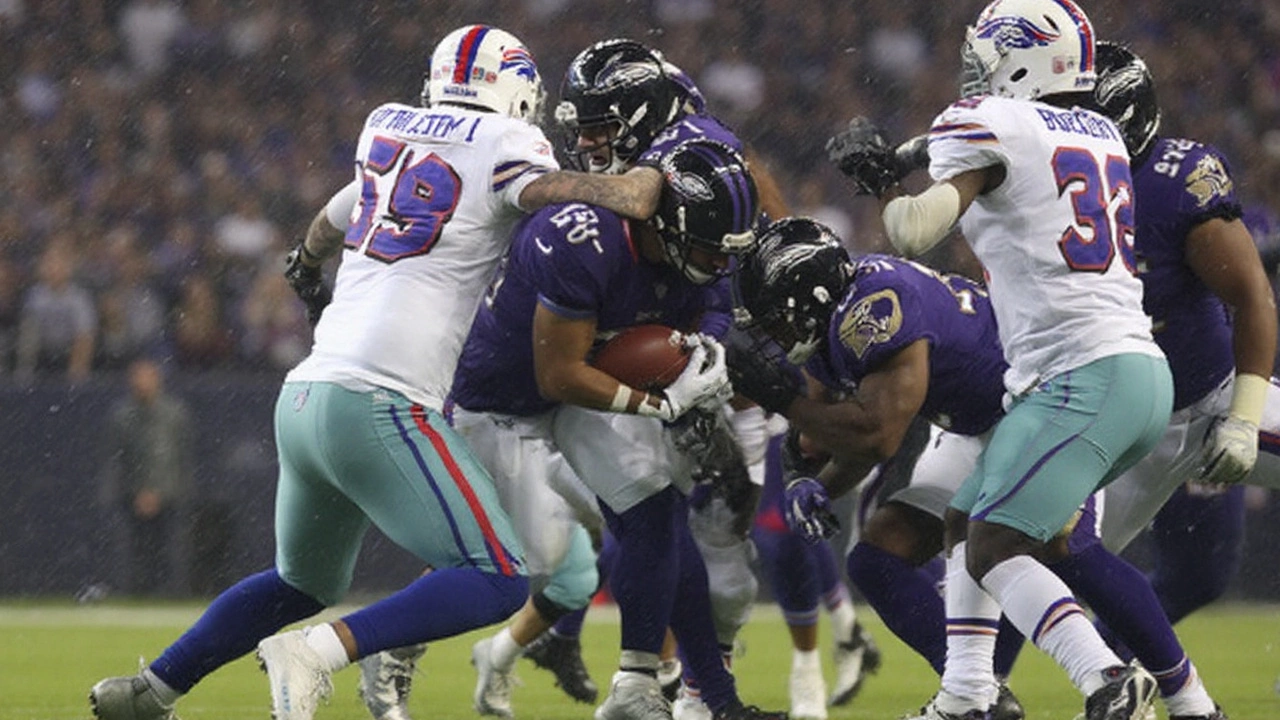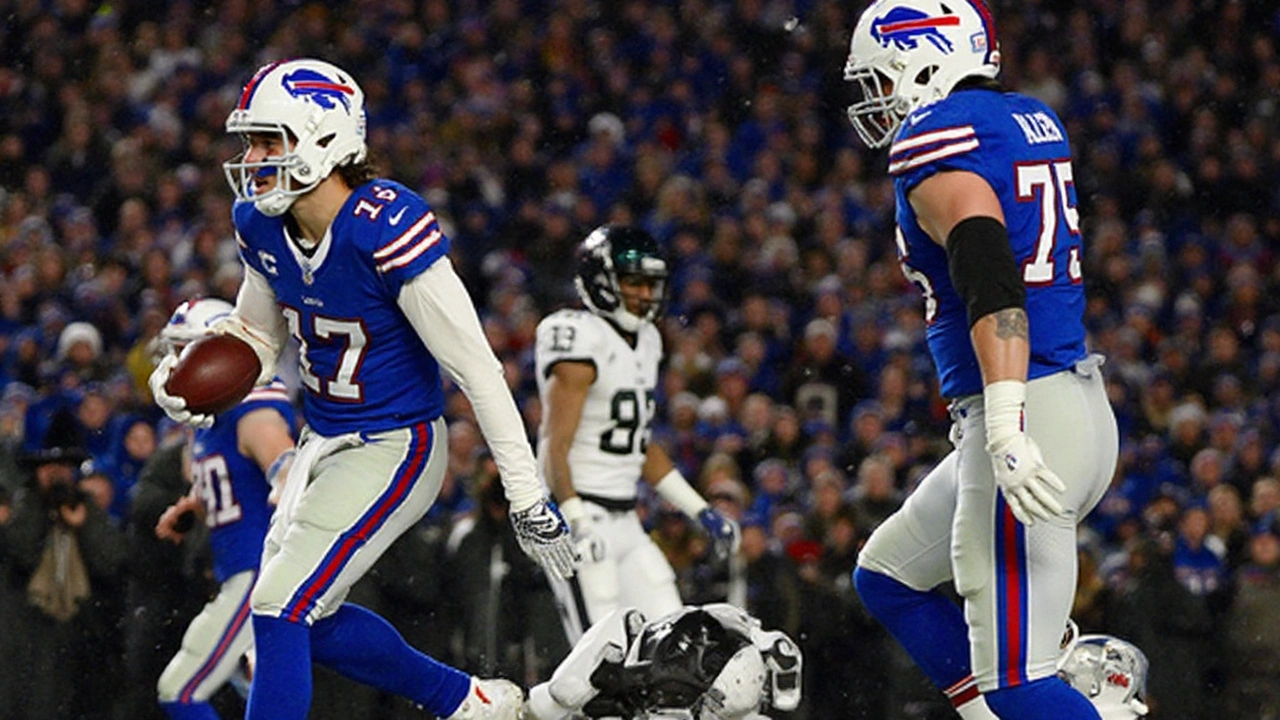
Week 1 belongs to Buffalo: a 15-point hole, a deflection, and a walk-off
If you blinked, you missed it. The Buffalo Bills trailed by 15 with five minutes left and still beat the Baltimore Ravens 41-40 on Sunday night, ending a breathless opening-week showdown with a walk-off field goal by veteran kicker Matt Prater. The game had everything: an MVP vs. MVP-runner-up duel, a tipped fourth-down touchdown that defied physics, and a final drive that felt like it was scripted for prime-time drama.
This wasn’t just a good opener. According to the Elias Sports Bureau, it was the first season-opening meeting between the top two players in MVP voting from the prior season since at least 1970—Josh Allen coming off the award and Lamar Jackson fresh from runner-up. Two stars who reshape defenses with every snap, and two rosters that opened the year tied for the shortest odds to win the AFC at +325 (ESPN BET). You could feel that weight in the stadium long before the kick split the uprights.
For most of the night, Baltimore looked a step ahead. The Ravens controlled tempo, mixed personnel smartly, and kept Buffalo’s front guessing with motion and layered routes. They cashed in on explosive plays and leaned on Jackson’s escapability to sustain drives. When they built a 40-25 lead late in the fourth, it felt like the moment you exhale and switch channels.
Then the Bills lit the fuse. Buffalo played with urgency and clarity, slicing the clock without panicking. The first strike was quick-hitting—no wasted downs, no hero-ball shots for the sake of it. They worked the boundary, got out of bounds, and forced Baltimore to defend everything: the seam, the flat, and Allen’s legs. That rhythm bled into the next series, where the game tilted on a single, chaotic snap.
Facing fourth-and-2 with the season opener hanging by a thread, Allen fired to Keon Coleman. The pass was deflected at the line—one of those slow-motion moments where the ball seems to float—and still found Coleman for a touchdown. The stadium lost its mind. That play didn’t just cut the lead; it flipped the psychology. Suddenly Buffalo’s sideline looked alive, and Baltimore’s defense looked like it was playing on its heels.
The finish was ruthless and clean. Buffalo’s defense forced just enough disruption to get the ball back, and Allen handled the rest. No panic throws, no surrender to the clock. The Bills moved into range, set the spot, milked seconds, and Prater did what a 15-year pro does: perfect snap, steady hold, walk-off dagger.
It’s hard to overstate how wild that fourth quarter felt on TV. Commentators said it looked like “playing Madden” or being “in an arcade,” and that’s exactly the energy—plays coming so fast you could barely catalog them. Win probability, which sat in the low single digits for Buffalo with five minutes left, flipped like a coin. That’s as much a nod to modern offense as it is to the composure of an MVP quarterback working in chaos.

Allen vs. Jackson lives up to the billing—and what it means next
Josh Allen and Lamar Jackson didn’t just put up numbers; they weaponized stress. Allen moved safeties with his eyes and created off-script windows when the rush got home. Jackson answered with the kind of second-reaction magic that makes defensive coordinators age a decade—sidestep pressure, reset base, throw darts. Each time one landed a punch, the other fired right back.
Baltimore executed its plan for three and a half quarters. They varied tempo, protected edges with chips and quick game, and leaned on their run concepts to keep Buffalo honest. When they got the Bills in nickel and dime looks, they hunted matchups and found leverage. The points came in flurries—40 should be enough to win on most nights—and yet the final five minutes exposed how thin the margin is against an offense that can score at will.
Credit Buffalo’s staff for game management. The Bills didn’t burn timeouts out of panic. They toggled between sideline throws and chunk plays up the seam, forcing the Ravens to declare coverage early and tackle in space. On that last drive, they protected Prater’s kick like it was gold—clean operation, no pre-snap jitters. It sounds simple, but those are the moments where a sideline either tightens up or trusts the work.
On the other side, the Ravens will stew over a few decisions. Do you stay aggressive with a two-score lead and five minutes left? Do you squeeze the clock more, even if it means risking a quick three-and-out? Hindsight is foul, but the tape will show soft zones that Buffalo shredded and a couple of late-down snaps where pressure didn’t get home. Little things—missed tackles, a half-step late on a disguise—turned yards into touchdowns.
The play that will live in September highlight reels is Coleman’s deflected score. For Buffalo, that’s chemistry announced on national TV. A rookie wideout doesn’t just stumble into trust on a fourth-and-2 with the game in the balance. That comes from reps, from the quarterback believing his guy will fight for the ball, tip or not. It’s a small snapshot of how Allen can elevate new weapons as the season stretches into the cold months.
Special teams decided the box score, but they also framed the night. Field position swung just enough to keep Buffalo in striking distance during the rally, and the operation on the final kick was clinic-level. Prater’s strike sealed a perfect start to the Bills’ final year at Highmark Stadium, a detail that gave the whole scene a little extra charge. If you’re closing down a home, this is how you throw the first party.
The broader context matters. This was the first meeting of last season’s top two MVP vote-getters to open an NFL year in more than half a century. The last time these two teams saw each other, Buffalo edged Baltimore 27-25 in a playoff knife fight. They entered 2024 tied for the best odds to win the conference, and after 60 minutes, you still can’t separate them by much. That’s the point: the AFC is going to be a weekly referendum on who can win games decided by inches and seconds.
Defensively, Buffalo found late-life pressure with sub-packages, trusting their back end to hold up for an extra half-beat while the rush looped and stunted. Baltimore, whose defense had been sturdy for most of the night, got caught between protect-the-sideline and protect-the-seam, and Allen punished the space they ceded. It wasn’t a schematic failure so much as a timing issue—Buffalo sped up, and Baltimore couldn’t force the one negative play that usually ends a rally.
Numbers will tell their story when the tape is graded, but you didn’t need a spreadsheet to feel the shift. The 77-play marathon felt like a showcase for what the league has become: quarterbacks who are both bazookas and battering rams, coordinators who steal edges with motion and leverage, and skill players who win even when the ball doesn’t travel clean. That tipped touchdown is modern football in one frame—defense does its job, offense still wins on resilience and positioning.
What’s next? For Buffalo, this is an early statement about poise. They don’t need the game on their preferred script to win it. For Baltimore, it’s a painful, very fixable lesson in closing. They’ll see these looks again—prevent-leaning shells, underneath throws bleeding into explosives—and they’ll adjust. You don’t score 40 in Week 1 without being built for the long haul.
So file this one under instant classic. Two heavyweights, one primetime slot, and a finish that will get replayed all week. If September gave us a preview of the AFC race, get comfortable. The margins are tiny, the stars are enormous, and the difference between home-field advantage and a road wildcard might come down to one tipped ball and a kicker’s right foot in Orchard Park.
For everyone keeping receipts: this was the kind of Bills vs Ravens game that reshapes early-season power rankings without telling the whole story. Buffalo’s resilience is real. Baltimore’s ceiling didn’t budge. And if we’re lucky, we’ll get this matchup again when the stakes are even higher and the temperatures are even lower.
 Sports Analysis
Sports Analysis